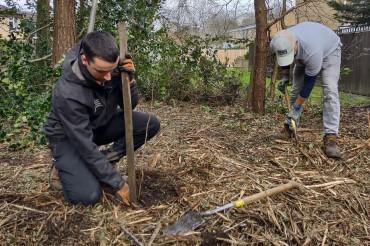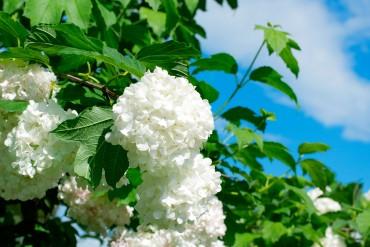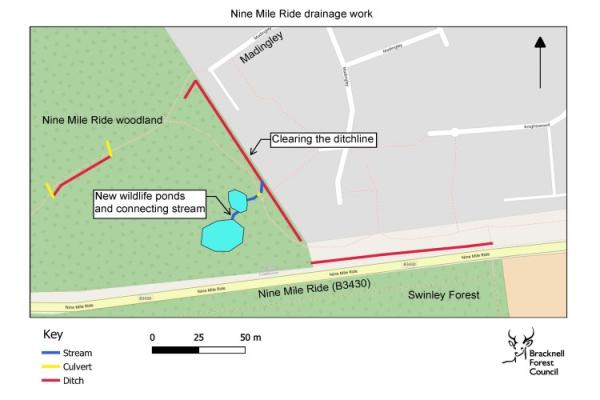Latest update
We are completing the final biodiversity improvements to woodlands at Nine Mile Ride. This follows work we did in 2023 and 2024.
The woodland management is in a new area of the site (see map below). It involves removing invasive species, such as common rhododendron, and regenerating the woodland with native species.
The work is due to start on Monday 3 November. The initial vegetation removal is likely to take one week to complete. We will carry out follow-up tree planting in the winter.
Public access will largely remain unaffected during the work. We may need to temporarily close some areas as a precaution.
Please:
- do not cross any barriers or tape
- stay away from machinery, tools or equipment
| Attachment | Size |
|---|---|
Document
Nine Mile Ride - phase map
|
9 MB |
What we have done
We are improving the biodiversity value of the woodland that runs alongside Nine Mile Ride (B3430), between Bagshot Road and Crowthorne Road.
In winter 2023, experienced contractors removed common rhododendron and cherry laurel from the woodland. This was a big undertaking, as the shrubs were growing densely and across a large area. To help the woodland regenerate, the work was supported by a program of native tree planting.

The mix of native broadleaved species used, include:
- crab apple
- guelder rose
- hawthorne
- hazel
- holly
- wayfaring tree
The large white blooms of the guelder-rose attract nectar feeders, such as hoverflies, in the spring and summer. Its red berries are a favourite food of birds such as overwintering waxwings.
Take Pride volunteers also helped by removing litter that was uncovered when the vegetation was removed.

In autumn 2024 we continued by excavating key areas to improve site access, drainage and create new wetland habitat.

Nine Mile Ride drainage map. © Crown copyright and database rights 2024 Ordnance Survey AC0000814058.
Work was also required to remove more non-native shrubs in additional areas of the site. Our rangers planted trees in the winter to help the woodland recover.
We are continuing to manage the woodland to help new trees establish and to suppress the regrowth of invasive weeds.
Woodland recovery
In June 2025, our biodiversity officer undertook some monitoring of the woodland, to assess how well it was recovering.
The monitoring showed the newly planted saplings were growing nicely, and native vegetation was regenerating at the ground level.
Plants to reappear include:
- willow-herb
- nettles
- ivy
- garlic mustard
- honeysuckle
The hazel which has been planted on the residential boundaries is largely healthy. Careful management, including spot herbicide treatments are helping to control the re-growth of rhododendron and laurel in several places.
Precautions
To minimise disruption, we are:
- sending letters to residents during each phase of works
- providing site notices about the work so visitors can better plan their route
- sharing news of these works with residents using our usual communication channels
- using specialist contractors experienced in carrying out this type of work
- taking every care to protect wildlife, this includes:
- carrying out tree work outside of bird nesting season
- taking advice from wildlife experts
Why we are doing this
The improvements are needed to maintain a healthy woodland environment.
Rhododendron ponticum and cherry laurel grow in the woodland, which runs alongside Nine Mile Ride.
These are non-native, evergreen shrub which cause dense shade where they grow. The species are highly invasive and need careful management to prevent them from dominating the woodland.
By removing them, we can regenerate the woodland with native species. This will create a better home for insects, bats, birds, and hedgehogs.
We are keeping:
- Scots pine, silver birch and sweet chestnut and other native tree canopy species
- species like hazel and hawthorn, which are native understorey trees (lower-level vegetation)
It is important to keep the open character of the woodland and promote natural regeneration of the canopy and understorey species. In this way the woodland will function as a natural and dynamic system.
We will be establishing a new network of wildlife ponds, and streams. This will be an extension of the existing wet woodland habitat. It will help support specialist flora and fauna, such as dragonflies and bats.
These new features, along with new ditches, will also help to improve site drainage and reduce the risk of seasonal flooding. It is important residents can enjoy good year-round access at Nine Mile Ride.
We will plant canopy and understorey trees, which thrive in acidic wet conditions. These will further aid in supporting the drainage on site.
We will also:
- plant more canopy species, such as beech, hornbeam and oak. These species are already present on site
- plant hazel along the residential boundary of the site, to create a future hazel coppice strip
This will give biodiversity a boost and address concerns raised by residents during the first phase of work.
The improvements will help boost the routine management of the woodland and trees. These are carried out by our rangers who look after the site.
It will also have many other long-term benefits such as creating a more attractive place for visitors. It will also support the development of wildlife corridors through Bracknell's urban environment.
Woodlands in decline
Woodlands are in decline across the UK, currently covering just 10% of our landscape. The average in mainland Europe is 40%.
In restoring woodland areas in our borough, we are working hard to improve local biodiversity.
Work to restore native woodland will help:
- counteract the decline of native woodland species
- provide an important habitat for birds, bats, insects and mammals such as hedgehogs
- support the development of wildlife corridors through Bracknell's urban environment
- improve local air quality by absorbing carbon dioxide and pollution
- support our aim to become net zero by 2050
Funding the work
The work is being funded by Section 106 development money. This must be spent towards:
- new woodland creation or the enhancement of existing woodland within the council's area
- the provisions of enhancements at any open space of public value capable of serving the development site
The funding has been earmarked for this biodiversity improvement project as it meets these criteria.
The improvements will also help reduce the impact of local developments. They will also provide offsite biodiversity units for biodiversity net gain (BNG).
This will contribute to the recovery of nature while developing land. It is making sure the habitat for wildlife is in a better state than it was before development.
It is one of several projects we are running to provide a net gain to biodiversity.
